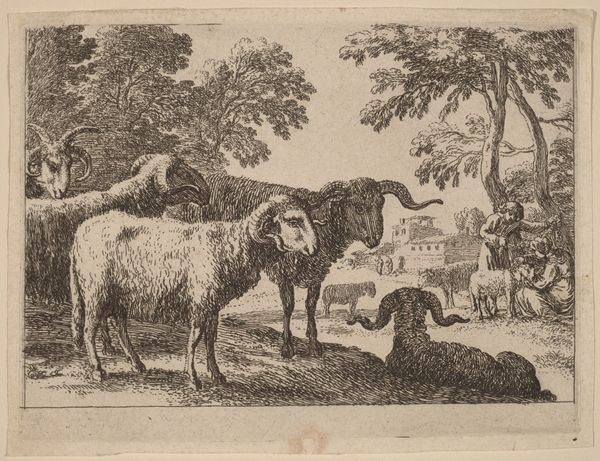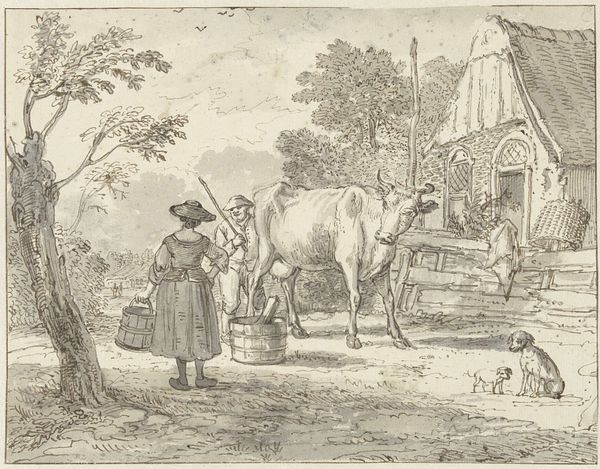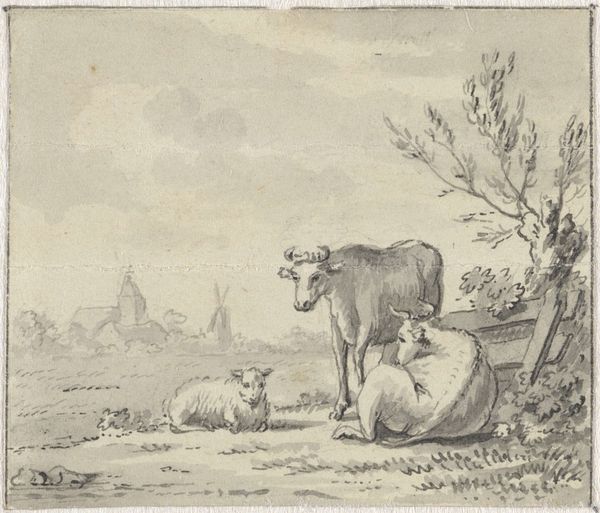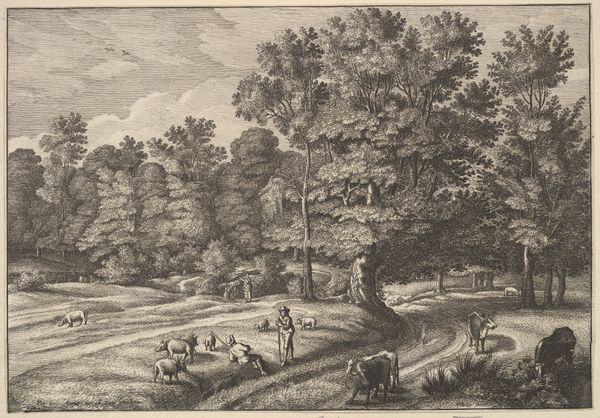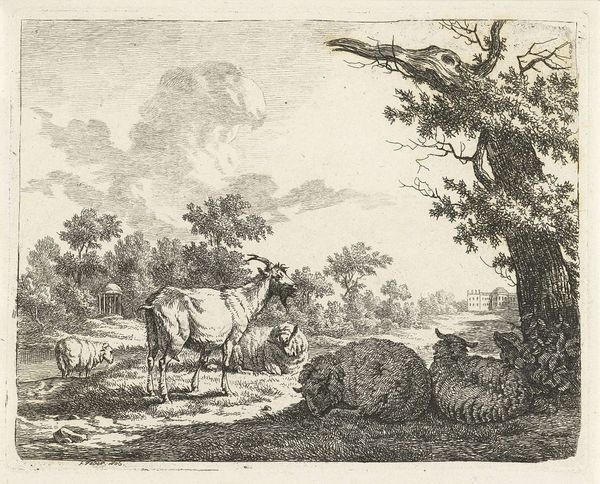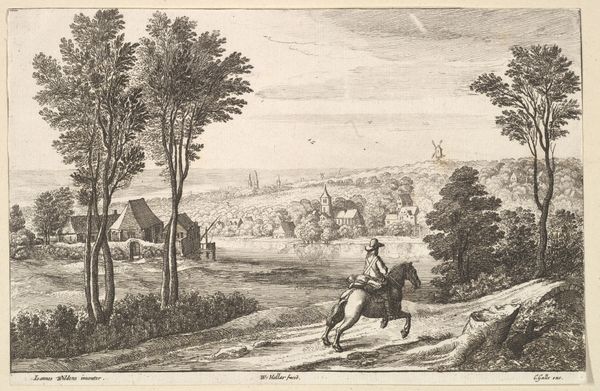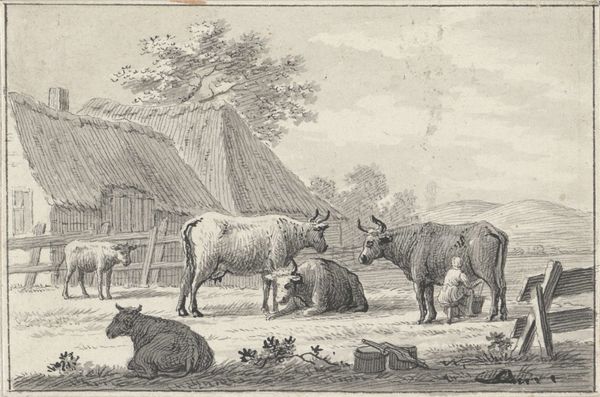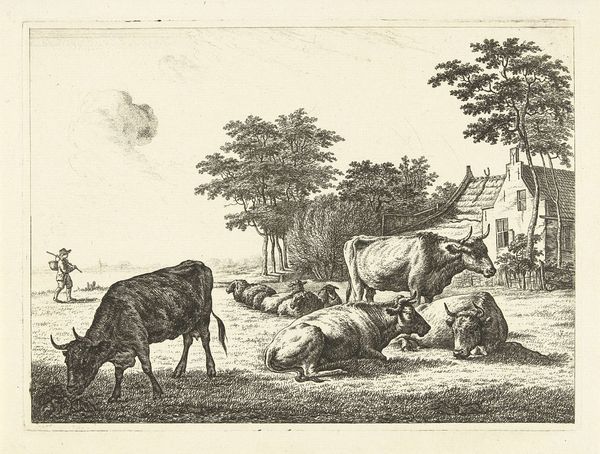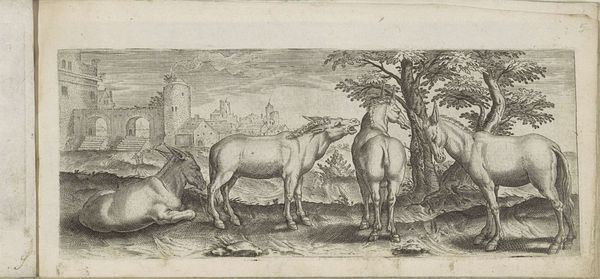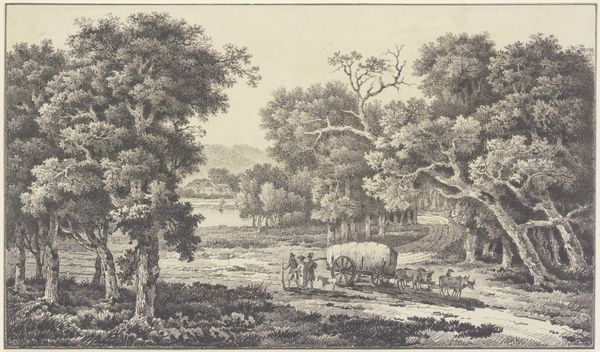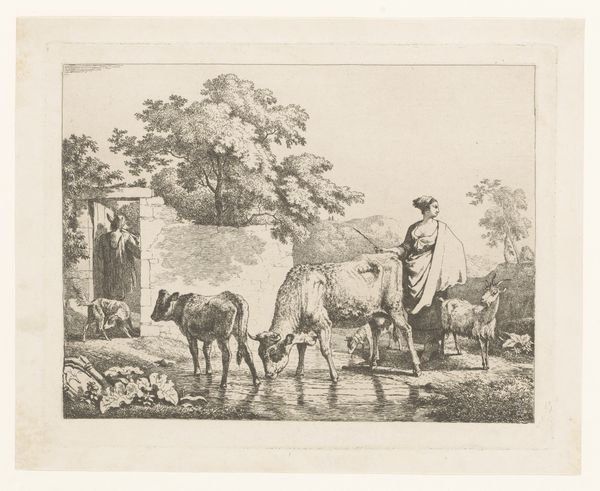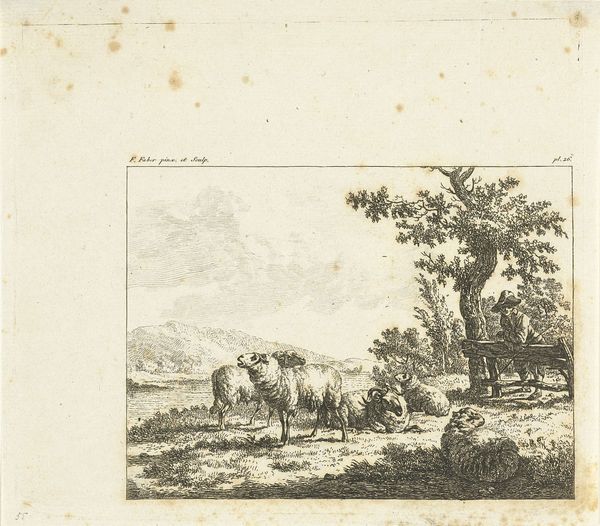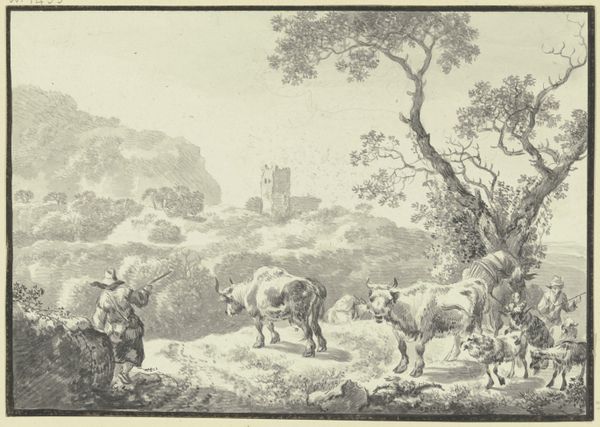
drawing, ink, pen
#
drawing
#
pen sketch
#
pencil sketch
#
landscape
#
ink
#
pen-ink sketch
#
sketchbook drawing
#
pen
#
watercolour illustration
#
genre-painting
#
sketchbook art
#
realism
Dimensions: height 56 mm, width 66 mm
Copyright: Rijks Museum: Open Domain
Editor: This is "Landscape with Two Cows and a Sheep" by Pieter de Goeje, likely made between 1789 and 1859. It's a pen and ink drawing, a very simple, almost folksy scene. It feels so unassuming. What stands out to you when you look at it? Curator: Well, it appears at first glance to be a simple rural scene, as you say, but what's fascinating is how it speaks to the evolving role of landscape art in that period. We see the rise of a merchant class in Dutch society. How might a scene like this be less about an idealized pastoral view and more about something else? Editor: Something else? Like what? It just looks like a guy walking his cow. Curator: Exactly! It's not simply a "guy walking his cow". What makes this scene relatable? It grounds the artwork, placing it outside an untouchable, mythical status. Do you see the church spire in the distance? It reminds us of community. Instead of history painting, where did civic pride find new expressions? Editor: I guess it’s relatable because you could see this in any village. So it becomes less about the aristocracy. Curator: Precisely. These artists begin to celebrate the mundane as well, offering the patron—often the rising merchant class—a picture of themselves and their own local environment. This artwork affirms this shift. It celebrates everyday life in this cultural context, not that of some ancient ideal. Editor: So it’s not just a nice picture; it's also about society finding new values? I see it differently now. Curator: It's both. Remember that even seemingly simple images are shaped by, and speak to, the social forces of their time. Editor: That's something to think about. Thanks.
Comments
No comments
Be the first to comment and join the conversation on the ultimate creative platform.
